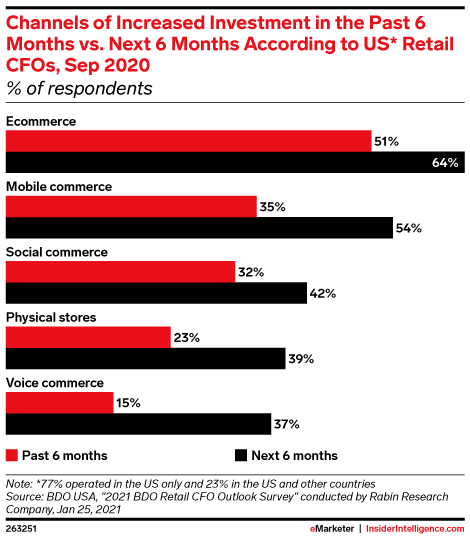5 tips for channel managers to deliver omnichannel success in retail
August 3, 2022Customers want control over when, how, and where they engage with your brand. And they want a seamless, consistent experience across every engagement.
Marketers know an authentic omnichannel experience is the holy grail in e-commerce—and with good reason. Purchase frequency shoots up 250%, and customer retention rates are 90% higher for brands that master omnichannel marketing.
If you’re not perfecting your omnichannel strategy, you’re missing out on your most valuable customers. Research shows 86% of shoppers regularly use two or more channels on the path to purchase, with only slightly fewer B2B buyers showing similar channel-hopping behaviors.
As a result of the pandemic and evolving customer behaviors, one thing has become crystal-clear: customers want control over when, how, and where they engage with your brand. And they want a seamless, consistent experience across every engagement. Here are five tips on how to deliver the omnichannel experience based on the demand of today’s consumers.
1. clear the path to purchase
Most marketers understand the lower the number of clicks, the higher the probability your customer will complete the checkout process. A frictionless path to purchase is every retailer’s goal.
The little details which get you there? Often overlooked. For example, 67% of consumers check the return policy before they make a purchase and a similar number compare shipping costs and delivery options. Don’t make your customers search for information they need to make a purchase decision.
As a general rule, the goal is to anticipate—and then eliminate—potential pain points on the path to conversion. That means providing the right content in the format your customer prefers at the right time. Personalization is key, so focus on product descriptions and guided selling features to help overcome friction.
2. understand buyer behavior
Customer experience matters more than ever before. A PwC study showed 86% of consumers are willing to pay more for a great customer experience. For marketers, that means knowing where and how customers engage with your brand and creating an experience that resonates.
An audit is an excellent way to get baseline information about your customers’ engagement. Consider the following when you evaluate buyer behavior:
- Where do your customers typically first encounter your brand?
- How much impact do social media platforms and third-party sites have on the path to purchase?
- What types of content and information do your customers engage with the most?
- Is your brand personality consistent across each touchpoint?
- Which CTAs and touchpoints are performing the best?
By arming yourself with this data, you can create personalized, consistent experiences across your channels and give your customers the choice and control they expect.
3. manage your brand’s online reputation
Another side effect of the COVID pandemic is everyone checks reviews before buying online, with 48% of consumers finding online reviews helpful. When asked which factors most impacted the purchase decision, 94% listed ratings and reviews as the most important. Price was a close second at 91%, with free shipping (78%) and brand preference (65%) lagging behind.
If you aren’t featuring product reviews as a part of your e-commerce experience, you’re ignoring one of the most potential conversion drivers. Research shows as few as five positive reviews can help move the needle. Even negative reviews can boost your reputation as long as you respond quickly and empathetically in a way that promises to make things right.
4. choose the right omnichannel technology
When you build your omnichannel e-commerce tech stack, don’t overlook your most important asset: product information. Every channel has specific product information needs to perform optimally. The old ways of working with spreadsheets and siloed data won’t cut it; you need a single source of truth and automated process to create consistent, personalized, and compelling experiences omnichannel retail demands.
A PIM solution serves as a repository for all your content and product information, including images, video, multimedia files, manuals, and technical specifications. Paired with digital shelf analytics (DSA), it allows you to monitor your products and channels in real-time to respond to market changes and opportunities ahead of your competitors.
Using PIM for retail lets you tell a compelling story at the right time to the right audience. Consider two shoppers looking at the same pair of athletic shoes. One is looking for the right footwear to support her workouts at the gym; the other is interested in finding a pair of sneakers to match a particular outfit. Each shopper needs a unique experience and specific information to make a purchase decision. The right PIM solution lets you provide it.
5. incorporate customer service into your omnichannel strategy
Remember, today’s tech-savvy shoppers want to be in control of their engagements at every step of the journey. It’s imperative retailers give customers the ability to get the information they need in the most convenient way for them.
Most brands have already incorporated multichannel customer service via email and voice. To really drive results and customer loyalty, you need to incorporate technology and tools which put customers in charge.
Depending on your strategy, that could mean implementing SMS text for routine customer service interactions, like shipping notifications and tracking information. Or it could include incorporating new technologies enabling virtual agents, AI chatbots, augmented or virtual reality, and video customer service. The point is to keep customer service at the forefront of building out your omnichannel experience.
The bottom line is omnichannel requires a team approach combining marketing and technical expertise and tools. Omnichannel demands new ways of thinking and working across an organization, but the end result is a superior customer experience that drives sales and builds brand loyalty. In today’s hypercompetitive environment, the investment in omnichannel is definitely worth it.
